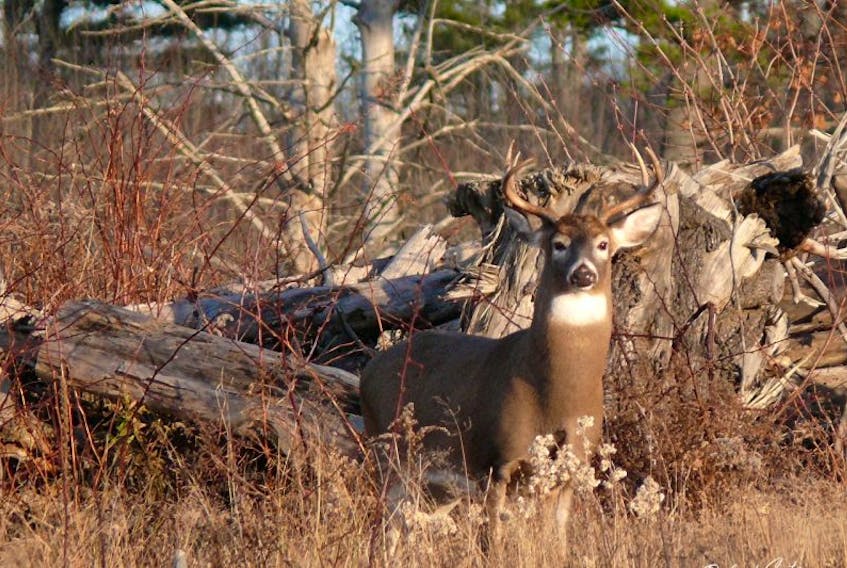Hunting is a popular activity with many people in Pictou County and this season looks like it will be another good one. The archery and muzzleloader season for deer has been open for some time now and the small game season opened the first of October.
The Nova Scotia rifle season for whitetail deer opens the last Friday of October and I know many Pictou County hunters are looking forward to spending some time in the woods. They won’t be alone as whitetail deer are the most popular big-game species in Nova Scotia. Eastern Canada is at the northern range for whitetails and their numbers are controlled to a significant degree by both weather and the amount and quality of habitat and food. I know many hunters are wondering if the easy winters of the past three years will impact deer numbers this fall. The low snow fall would have made for easy travel, improved survival and should increase deer numbers in the province. While weather plays an important role in deer survival other factors, such as predation by coyotes, black bears and domestic dogs, along with illegal hunting also play a major role.
To get an overview of how wildlife populations are doing in Pictou County I recently checked harvest reports for big and small game on the Nova Scotia Department of Lands and Forestry website. The site has results both by management zone, and for the rest of the province. I first looked at the reported deer harvest for 2018 and found 9,808 deer were harvested in the province, and Zone 109, which includes the majority of Pictou County, accounted for 676 of them, 366 does and 310 bucks. This was an increase from 655 deer harvested in 2017. The provincial harvest increased from 9,109 in 2017. Licence sales declined slightly with 46,909 big game licences sold, down from 47,201 the previous year however hunter success rose to 20.9 percent, up from 17.9 in 2017.
As someone who recently started hunting with a muzzleloader, I was interested to see that archery and muzzleloader licences increased in the province from 12,351 in 2017 to a high of 13,493 last season.
From previous discussions I’ve had with lands and forestry wildlife managers I knew the tough winter we experienced in 2014-2015 had a significant impact on the number of young deer which survived the winter and resulted in a reduced number of older deer in the population. They told me this reduction in the deer herd would be felt for a number of years.
Wildlife staff collect a lot of data in order to assess the status of deer in the province. One source of data is road kill. Deer picked up on the highway during the winter are examined for bone marrow content and does are checked for the number of fawns they were carrying. Nova Scotia is at the northern edge of the whitetail’s range so severe weather can have a significant impact on deer numbers, and condition, from year to year. By measuring bone marrow fat content they have a good idea how the herd is doing. In 2015 results indicated that almost half the herd, 49 per cent, were stressed nutritionally.
Fortunately, the most recent data revealed only 3.4 per cent of the deer examined last winter were stressed. Road-killed does had an average of 1.23 fawns per adult doe, a number which wildlife managers consider to be representative of a healthy herd. Taken together the results indicate a healthy deer herd now, and in the future.
Increasing deer numbers continue to be a concern in many areas of Nova Scotia and a good indication of how much the herd is increasing can be seen in another interesting statistic the Department of Lands and Forestry collects, the number of hours hunters must spend in the woods to harvest their deer. The data goes back to 2015 and last year had the lowest number of hours spent hunting before harvesting a deer in all categories: bow, crossbow, muzzleloader, rifle and shotgun. For example, in 2015, rifle hunters spent over 80 hours before harvesting their deer. In 2018 the average was 40 hours. Some of the data wildlife managers use for managing wildlife comes from hunter’s report which makes it important to report your harvest at the end of the season. I hope everyone has a safe and enjoyable hunting season.
Don MacLean is an outdoor writer and biologist who lives in Pictou County.









